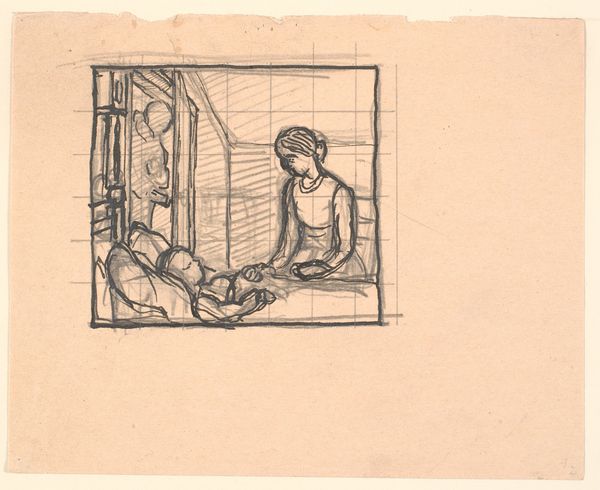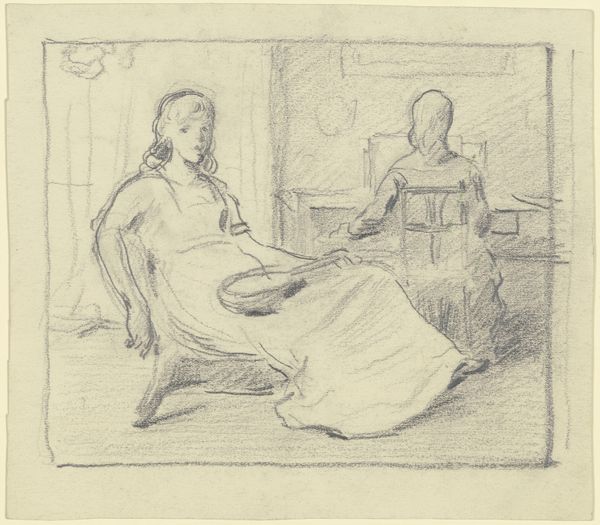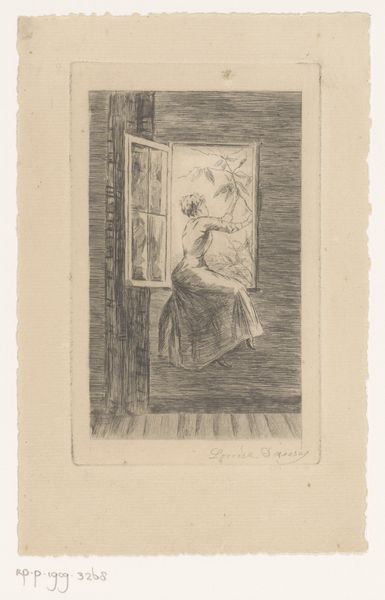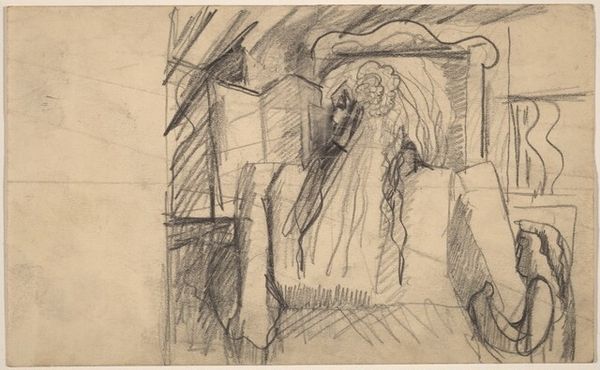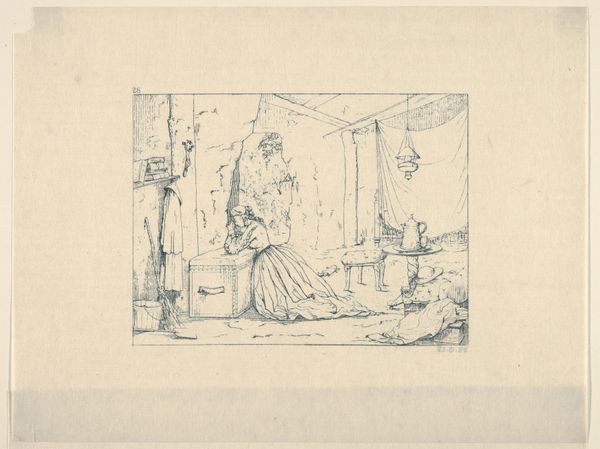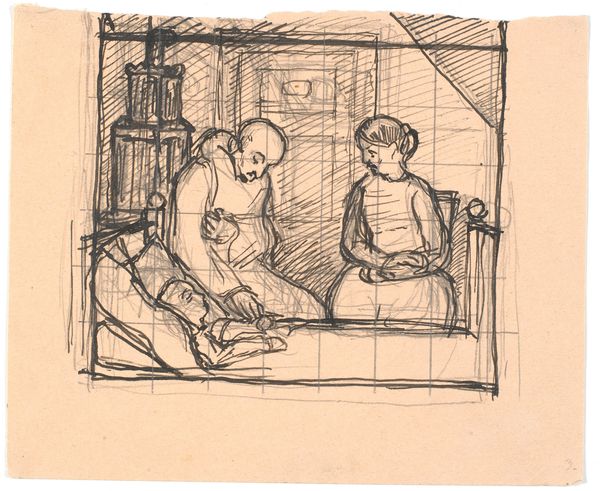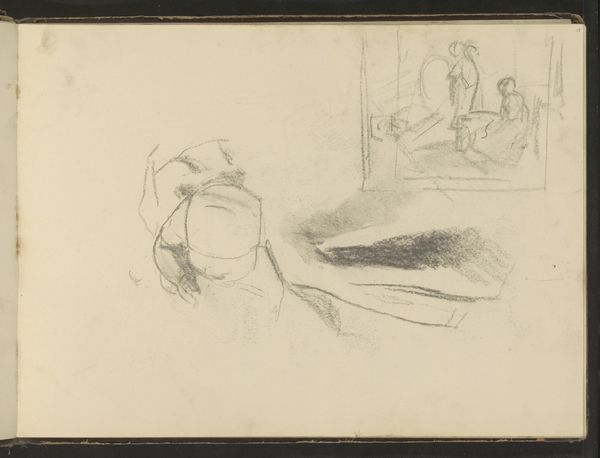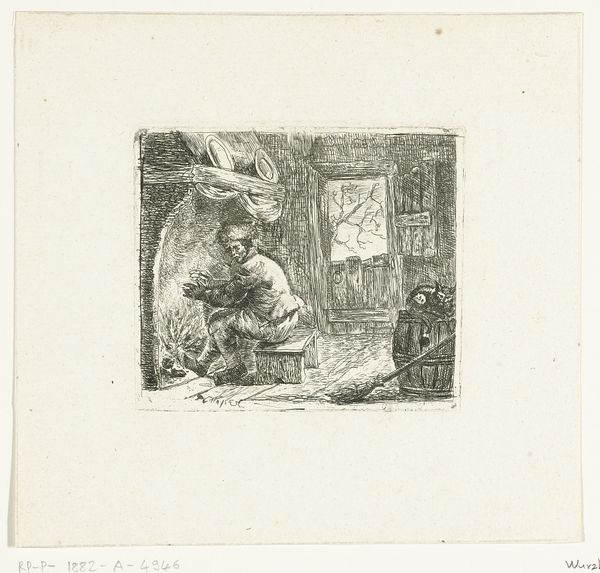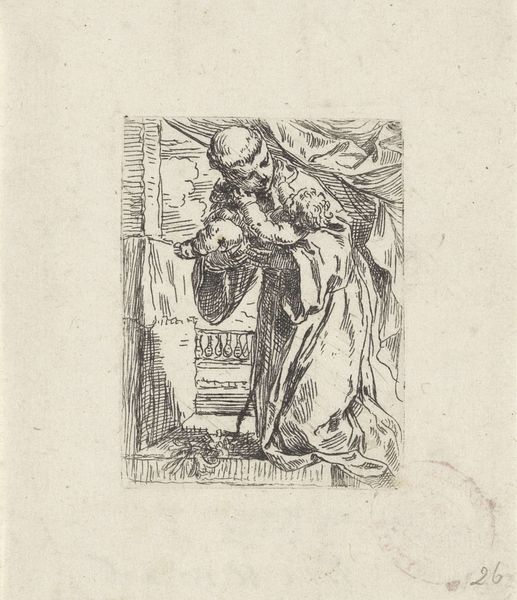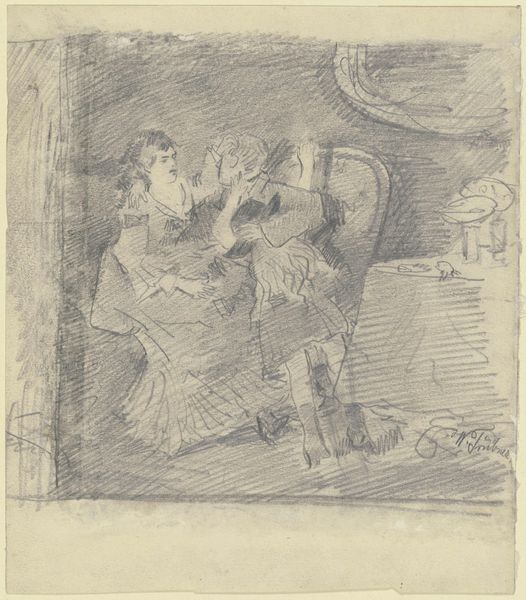
Og Moderen så ned i sit Skød, og tårerne løb hende over Kinderne... 1901 - 1902
0:00
0:00
drawing, pencil
#
portrait
#
drawing
#
pen sketch
#
figuration
#
intimism
#
pencil
#
symbolism
Dimensions: 156 mm (height) x 195 mm (width) (bladmaal)
Editor: This pen and pencil sketch is called "Og Moderen så ned i sit Skød, og tårerne løb hende over Kinderne…" by Fritz Syberg, created around 1901-1902. It evokes such a feeling of intimate sadness. I'm struck by how raw the medium feels. What stands out to you? Curator: The roughness of the materials, the exposed pencil lines – these aren't flaws, but vital clues. Syberg uses this directness to reveal the labor involved. It’s not just about portraying grief, but about *how* that portrayal comes into being through the artist's hand, the cheapness of the materials, the ready availability of pencil and paper. How does the mode of production impact the scene for you? Editor: That’s interesting, I hadn’t thought of it like that. Seeing the process as part of the meaning… Well, it definitely amplifies the sense of immediacy, like he captured a fleeting moment without refining it, making it feel less staged. Curator: Exactly! Consider the social context: inexpensive materials democratized art making. Syberg is using these readily available, ordinary tools to depict a domestic scene. Where does this put it, in your mind, in relation to ‘high art’ of the period, with its emphasis on oil paint and grand scale? Editor: It sort of undermines it, doesn't it? The choice of subject matter along with the materials elevates the everyday experiences of women and domestic life. It moves away from traditionally valued subjects in art. Curator: Precisely. By valuing the process and everyday materials, Syberg subverts the established hierarchy. It encourages us to question what art *is* and for whom it is created. Editor: I see that the act of drawing itself, made accessible through these simple materials, challenges existing notions about who gets to make art and what subjects are worthy of artistic representation. Thank you! Curator: And the sketch format reveals how quickly an artist’s hand can transcribe emotion onto paper, implicating labor, class and artistic creation. I am happy we could arrive at this point together!
Comments
No comments
Be the first to comment and join the conversation on the ultimate creative platform.
